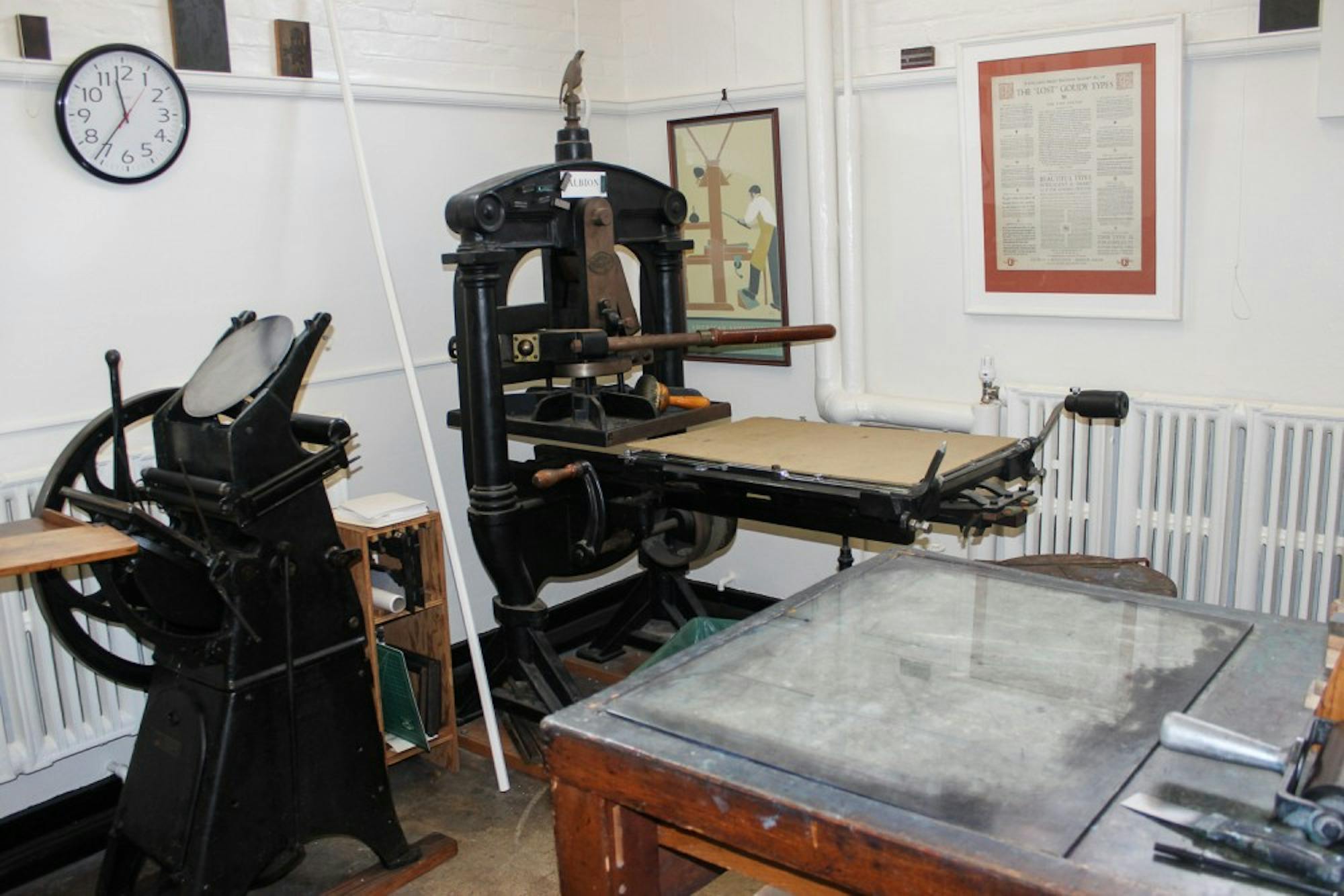A secret hides in Baker Library’s basement, and you have probably never noticed it.
No, it is not a three-headed dog you will need to lull to sleep or a madwoman locked away, but Dartmouth’s full-service Book Arts Workshop, which allows students and community members to handcraft invitations, birthday and holiday cards, flyers and even entire books. The workshop offerings include printing presses dating from the 19th century to the mid-20th century, a letterpress and bookbinding studio.
English professor Alexandra Halasz called the studio a “fabulous, little-known” resource — one of Dartmouth’s most under-appreciated spaces.
“For those who are artists, the book workshop offers an array of three-dimensional and sequential forms that take printmaking and other practices in new directions,” she said. “I think what students value is the disciplined creative practice, the hands-on experience and the wonderful variety of books they see each other making.”
Students can take workshop courses and use the facilities during open studio hours without previous experience, instructor Sarah Smith said. The workshop staff, which includes professional designers, printers, binders and artists, answers questions and assists with equipment.
Studio art professor Louise Hamlin noted the significant connection between the workshop and the library itself.
“It is a fabulous thing to be able to print books in the building that preserves them,” Hamlin said.
In order for students to begin using the letterpress, they must first attend an orientation session. Letterpress involves covering a raised surface, such as an engraving of metal or wood type, with ink and imprinting the image onto paper with a printing press, letterpress instructor Robert Metzler said.
Letterpress was the primary printing method for 500 years, until the 1950s, Metzler said. Recently, it has witnessed a revival in popularity.
“Letterpress has the unique quality of creating a distinct solid color image impressed onto paper that no other process possesses,” Metzler said.
Smith said the sensory experience of engaging with letterpress products distinguishes them from other printed materials.
“[It] has the smell of the ink and the feel of the slight impression of the type pressed into the paper,” she said.
The workshop also offers short classes on bookbinding structures and printing techniques, as well as field trips to visit local printers, binders and artists, Smith said.
Bookbinding instruction at the workshop varies from making traditional sewn and glued books to less traditional origami-based folded books, Metzler said. Halasz is currently teaching a course about the history of the book that includes a typesetting exercise and allows students to create a book in place of a final essay.
Many students use the workshop and printing presses to make projects that are both aesthetic and functional, Metzler said. Students typically print and design invitations, cards, posters, poems and artist books.
Halasz said she has even seen students make knit books and books in the shape of a double helix or an altarpiece.
Julie Skinner, a graduate student who frequents the workshop, said she uses the presses to design her own unique sets of stationery. Callista Womick ’13, who took Halasz’s class last year, said she is currently working on a book with metal covers and locks along the fore edge.
While the workshop specializes in traditional methods of letterpress and bookbinding, the studio space has been expanded to include some digital capabilities. Smith said that many students have begun experimenting with relief plates from computer-generated images and type, using tools like Adobe InDesign, Photoshop, photocopy transfer and laser cutting.
“This creates a nice physical link across the centuries that complements the typical printmaking process,” Hamlin said.




